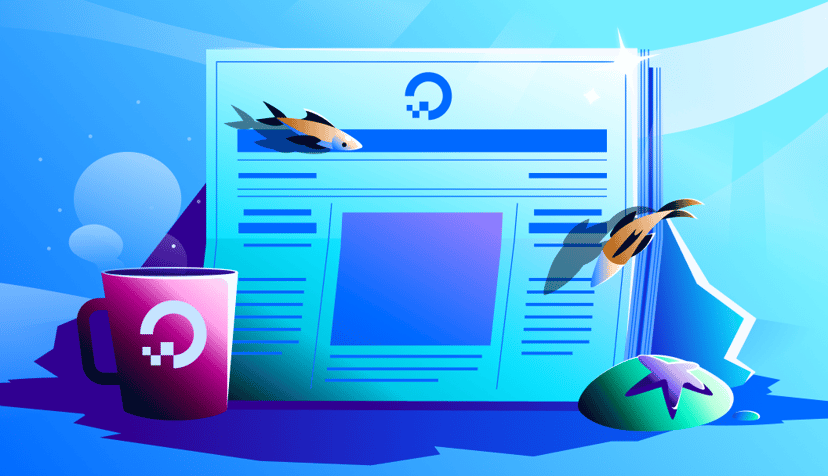Businesses of all kinds are reassessing IT spends in preparation for continued economic slowdowns in the next year. Teams will be asked (if they haven’t been asked already) to find money in their budgets wherever possible. While often the biggest category in IT spend, cloud computing allows businesses to leverage dynamic infrastructure in order to run leaner, scale more efficiently, and ultimately save money in the long term.
Still, startups and SMBs may find themselves seeking to cut costs wherever possible, and when done thoughtfully, reducing cloud spend can have a significant impact on the bottom line. As teams build out their application’s architecture and plan initiatives for 2023, optimizing workload performance and cost can free up money in the budget for growing teams.
A big-picture view of the bill
Cloud bills are often complex and unpredictable, making it hard for teams to identify areas where costs can be reduced. Each component of an application’s architecture interacts with other parts of the workload, and it’s critical to understand and assess how each piece performs individually and as part of the whole application. Different components will have different pricing models, and teams comparing the costs of multiple cloud providers will find that apples-to-apples comparisons are difficult at best.
Teams will need to balance cost savings with reliability and performance, piecing together a puzzle that best suits the unique needs of the business. Start with understanding and evaluating the four core components of cloud offerings, including compute, storage, bandwidth, and support.
Compute costs
The foundational offering from cloud providers is compute, where servers are partitioned using a hypervisor into smaller virtual machines (VMs). Computing resources can potentially have hundreds of Central Processing Units (CPUs), hundreds or thousands of gigabytes (GBs) of Random-access memory (RAM), and thousands of GBs of storage. Different cloud providers will have different offerings for VMs, with each provider often offering multiple configuration options. Builders can choose the virtual machine configuration that makes the most sense for their workload, prioritizing the amount of RAM and CPUs. DigitalOcean’s Droplets also include storage and bandwidth along with compute, but some cloud providers bill for these separately.
DigitalOcean’s Droplets configurations offer a healthy balance of CPU and RAM to meet the requirements of a variety of applications. Builders can choose a Droplet with a shared vCPU or a dedicated vCPU and choose between a variety of RAM vs. CPU configurations, depending on the needs of the business. This allows teams to save costs by avoiding paying for RAM or CPU that they won’t ultimately need. Our research found that DigitalOcean CPU Optimized Droplets are 88% cheaper than the largest cloud provider in the market.
Pricing models for global workloads will vary depending on your cloud provider. Some providers charge based on location and in local currency, while others, DigitalOcean included, have consistent pricing across the world. Prices also have the potential to vary drastically as organizations scale. With cloud offerings, developers can easily scale vertically by adding more CPU if their VMs don’t have enough processing power or by scaling horizontally to increase instances and handle more load.
As shown in the below graphs, DigitalOcean is more cost-effective for compute than other providers as companies scale with an increase in instances. The comparison is between an $18/monthly basic Droplet with a similar instance from a competing cloud provider.

Storage costs
Some VMs (compute offerings) include a certain amount of storage. All DigitalOcean Droplets include a fixed amount of SSD storage, and additional storage can be added with DigitalOcean’s Volumes and Spaces. A basic $6 Droplet at DigitalOcean comes with a 25GB SSD, and an $18 Droplet with a 60GB SSD. The same $18/monthly Droplet that we compared in the compute section, which seemed slightly more expensive than a competing cloud provider, now seems very cost-effective when the included storage of 60GB SSD is taken into consideration.

However, businesses often need to add additional storage to the baseline amounts that come with VMs. Cloud providers have developed services to fill the storage needs of businesses, mostly comprised of two categories: object storage and block storage.
Storage offerings typically begin with a base price for an allotted Gibibytes (GiB) and then charge for additional GiB beyond that allotment. Block storage offerings like DigitalOcean Volumes allow users to increase storage capacity without paying for a larger VM. Object storage offerings like DigitalOcean’s Spaces, an S3-compatible object storage option that features a built-in content delivery network (CDN) can make scaling easier and data more accessible and reliable, doing so at an affordable price.
Pricing for DigitalOcean’s Spaces starts at $5 per month, including 250 GiB of data storage and a built-in CDN for no extra cost. Additional storage is charged at only 2 cents per GiB. Pricing for DigitalOcean’s Volumes starts at $10 for 100GiB. DigitalOcean’s industry-leading bandwidth pricing and flat bandwidth overage of $0.01 per GiB allow builders to easily estimate monthly bills.
Bandwidth costs
Bandwidth pricing can be complex and is often overlooked because it’s listed as pennies per GiB, but for many network-intensive applications, bandwidth costs quickly add up, sometimes even making up the majority of their cloud bills. DigitalOcean pricing models are extremely beneficial for bandwidth-intensive organizations because of bandwidth pooling. Data transfer into DigitalOcean and within a builder’s private networks is free of charge. Since each Droplet comes with a set amount of bandwidth, the more Droplets you have, the more free transfer you get. Each Droplet includes a quota for outbound data transfer, and all the Droplets in your account together form a bandwidth pool. An account can utilize outbound transfer up to the amount of the bandwidth pool with no additional charge, and any excess transfer costs just $0.01 per GB. For example, an $18/monthly Droplet costs $18, including the data transfer (out) capacity of 3TB of data. Other cloud providers’ price rates show pennies per GB, but they end up impacting a significant part of the bill for bandwidth-intensive organizations.

An $18 monthly charge on DigitalOcean could equal $297 or more with other cloud providers in the market. This is one of the biggest differentiators in cost, especially for businesses anticipating rapid scale.
Support costs
Support can be a critical need for those with production applications, and being able to reach out to cloud providers to resolve any issues can save time and money. At DigitalOcean, we pride ourselves on the support we provide and have a straightforward approach based on business requirements.
DigitalOcean’s free support plan is useful for accessing support channels and tapping into the knowledge of the pooled agents with an expected response rate of 24 hours. Our paid support offerings, Standard and Premium, provide access to dedicated agents and technical account managers based on what you choose.
When compared to other cloud providers, DigitalOcean’s support plans cost significantly less. The maximum DigitalOcean customers will pay is $1000 for Premium support, while other cloud providers charge tiered pricing based on your monthly bill, often amounting to much higher monthly costs.
For example, if your monthly cloud bill is $85,000, with DigitalOcean Premium support you would pay $1000, while other providers charge up to $6,000 or more for dedicated support.

Grow with us
DigitalOcean supports all types of applications, from basic websites to complex Software as a Service solutions.
Contact us to learn more about how you can save with DigitalOcean, or sign up today to get a $100 free credit with DigitalOcean as a new user.
About the author
Try DigitalOcean for free
Click below to sign up and get $200 of credit to try our products over 60 days!Related Articles

Introducing langchain-gradient: Seamless LangChain Integration with DigitalOcean Gradient™ AI Platform
Narasimha Badrinath
- August 19, 2025
- 2 min read

Agentic Cloud: Reinventing the Cloud with AI Agents
Bratin Saha, Chief Product & Technology Officer
- May 19, 2025
- 5 min read

How to optimize your cloud architecture for business growth
- May 9, 2025
- 5 min read